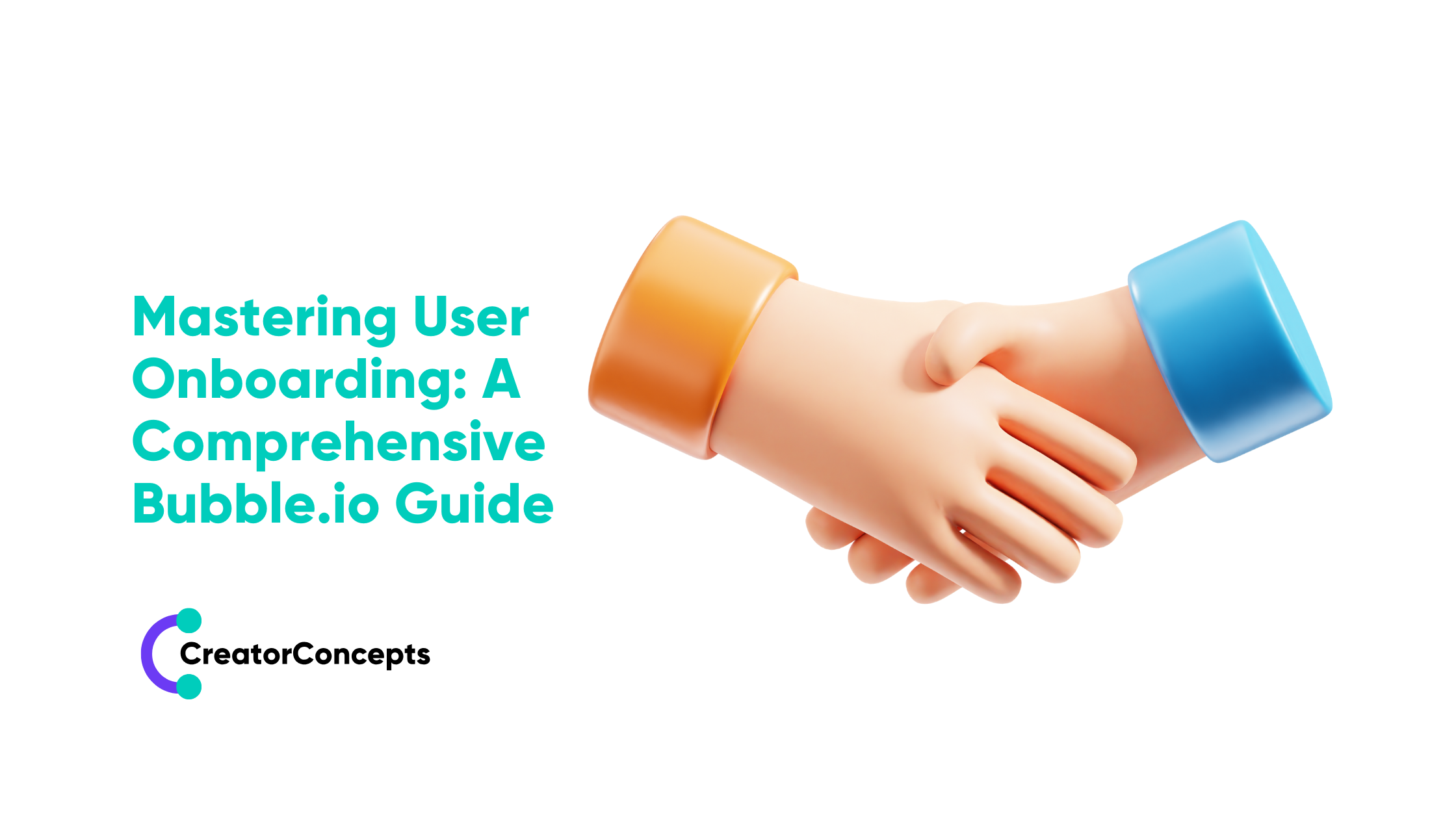Enhancing User Authentication and Security in Your Bubble.io App
In today's digital landscape, cyber threats are constantly evolving, making it increasingly crucial for app developers to prioritise user authentication and security. A secure app not only protects users' sensitive information and personal data but also helps maintain user trust and confidence in the application. As Bubble.io developers, we are well aware of the importance of implementing strong security measures in web and mobile applications. In this tutorial, we will guide you through the process of creating robust user authentication and security features for your Bubble.io app that ensure optimum data protection and user privacy.
Bubble.io is a powerful no-code development platform that allows us to build secure applications with sophisticated user authentication systems and top-notch security features without writing extensive code. Combining the platform's out-of-the-box functionalities with best practices, we can create reliable security measures that protect your app from potential cyber threats and secure user data. Our expertise in Bubble app development will help you establish a safe digital experience for your users, from signup to data access control.
By the end of this tutorial, you will be well-equipped to implement cutting-edge user authentication and security features in your Bubble.io app, ensuring that your MVP or production-ready app remains protected from potential risks and vulnerabilities. Are you ready to strengthen your app's security and deliver a safe, reliable experience for your users? Let's begin!
1: User Signup – Secure Registration Process
A secure user signup experience is the first step in ensuring your Bubble.io app users can trust your app with their data. Implement a registration process that validates new users while adhering to the best practices for collecting and storing user information.
a. Built-in User Signup Functionality
Bubble.io provides out-of-the-box functionalities for user signup management. Utilise Bubble's built-in User data type, which comes with default fields such as email and password. These fields are automatically hashed and encrypted, ensuring optimum security for your users' sensitive information.
b. Email Verification
Implementing email verification for new accounts can help prevent fraudulent registrations and ensure that the email address provided by a user is accurate and accessible. You can use Bubble.io's built-in Send Email action to send verification links to users with a unique token. Configure the workflow to update the user's account status upon the successful validation of this token.
c. Password Strength Enforcement
Provide password guidelines for users and enforce stringent password rules like minimum length, upper and lower-case letters mix, and special characters' inclusion. Utilise Bubble.io's built-in regex pattern matching functionality to validate password inputs accordingly.
2: User Login – Secure and Streamlined Authentication
A secure user login process is vital to maintain user trust and minimise the risk of unauthorised access to sensitive information. Let's explore the methods for incorporating secure authentication in your Bubble.io app.
a. Standard Login Process
Leverage Bubble.io's built-in authentication workflows to securely log users in and out of your app. Set up logic to prevent repeated failed login attempts and employ account locking or time-sensitive delays if needed.
b. Social Login
Integrate social login options, like Google or Facebook, for added convenience and security. This method allows users to authenticate using their existing social accounts and can be implemented using Bubble.io's built-in OAuth functionality or third-party plugins.
c. Multi-factor Authentication (MFA)
Add an extra layer of security to your authentication process with MFA. With MFA, users are required to provide additional proof of identity, such as a one-time password (OTP) sent to their email or mobile device, to log into your app. This can be achieved using Bubble.io plugins or external APIs, which provide OTP generation and verification capabilities.
3: Access Control – Granular Permissions and User Roles
Implementing granular access control helps ensure that users only have access to the features and data that they require. This minimises potential security risks and provides a tailored experience for each user.
a. Roles-Based Access Control (RBAC)
Create a structured RBAC system within your Bubble.io app by associating user roles with permission levels. For example, define roles such as Admin, Manager, and Member, granting different privileges and capabilities accordingly. Utilise Bubble.io's data privacy features, like protecting data types with roles, to enforce access restrictions.
b. Conditional Access
In addition to RBAC, you can implement dynamic permissions by setting up conditional access practices in your app. Use Bubble.io's visual editor to create conditions based on user attributes, app variables, or other conditions specific to your app's requirements. This way, you can apply access control rules dynamically, providing a secure and personalised user experience.
4: Secure Data Storage – Protecting Sensitive Information
Handling and storing sensitive user data securely is crucial in maintaining the integrity of your app and the privacy of your users. Follow these best practices to keep your Bubble.io app's data storage safe and secure.
a. Data Encryption
When storing sensitive user data, ensure the data is encrypted both in transit and at rest. Applying encryption is critical in protecting confidential information from potential breaches. Bubble.io inherently offers encryption for default User fields like passwords, but for custom fields, consider utilising third-party encryption plugins or external APIs.
b. Secure API Integration
When integrating external APIs in your Bubble.io app, always use secure connections like HTTPS and follow the API provider's security guidelines. Implement proper authentication protocols, like API keys or token-based approaches, ensuring proper access control and security for your API endpoints.
c. Data Backup and Recovery
Regularly back up your Bubble.io app data and store backups securely to prevent data loss. Additionally, establish a data recovery plan to bounce back quickly in the event of a security breach or data loss, minimising downtime and data compromise.
5: Regular Security Testing and Updates
An effective security strategy involves ongoing testing, monitoring, and updating your Bubble.io app to stay ahead of potential threats.
a. Routine Security Audits
Identify and resolve any security vulnerabilities by conducting regular security audits for your app. Use tools like Bubble.io's built-in debugger and third-party security scanners to assess your app's safety, addressing any issues that arise promptly.
b. Continuous Monitoring
Monitor your app's activity, keeping an eye on any suspicious behaviour or unauthorised access attempts. Regular monitoring will help you detect and react to potential threats swiftly.
c. Security Updates
Stay informed of any security updates from Bubble.io, third-party plugins, or external APIs you've integrated. Make it a priority to apply these updates immediately, ensuring your app remains secure against emerging cyber threats.
Conclusion
By implementing robust user authentication and security measures in your Bubble.io app, you are actively protecting your users' sensitive data and fostering trust in your digital experience. Guaranteeing a secure environment is vital for your app's success, and this tutorial will aid you in safeguarding your MVP or production-ready app against potential risks. If you need further guidance on strengthening your app's security or require expert assistance in the process, don't hesitate to reach out to our team of Bubble developers at CreatorConcepts Limited – we're here to help!
 By
By


